Healthy Grapevine Maintenance is the key to unlocking a bountiful harvest of juicy, delicious grapes right in your own backyard! Imagine stepping outside and plucking sun-ripened grapes straight from the vine – a truly rewarding experience for any home gardener. For centuries, grapevines have held a special place in cultures around the world, symbolizing abundance, celebration, and even transformation. From ancient Roman vineyards to the sprawling landscapes of Napa Valley, the cultivation of grapes has been a cherished tradition.
But let’s be honest, achieving that picture-perfect grapevine isn’t always easy. Pests, diseases, and improper pruning can quickly turn your dreams of homemade wine or fresh grape juice into a frustrating reality. That’s where these DIY tricks and hacks come in! I’m going to share some simple yet effective techniques that will empower you to take control of your grapevine’s health and maximize its fruit production.
Whether you’re a seasoned gardener or just starting out, mastering healthy grapevine maintenance doesn’t have to be daunting. This article will break down the essential steps, from choosing the right location and soil to implementing effective pest control strategies. Get ready to roll up your sleeves and transform your grapevine into a thriving source of delicious grapes for years to come!
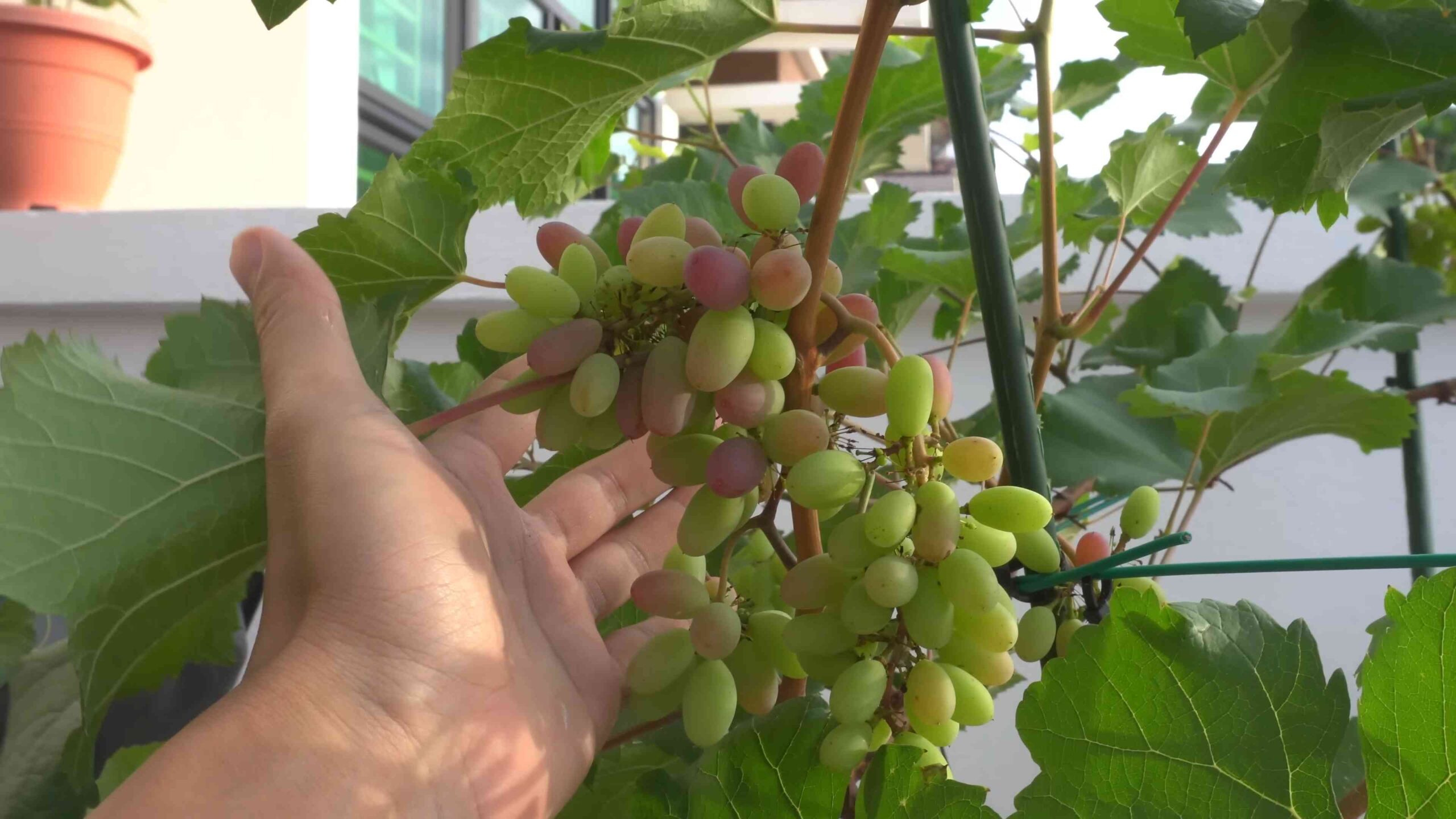
DIY: Revitalize Your Grapevine for a Bountiful Harvest
Hey there, fellow gardening enthusiasts! Are your grapevines looking a little lackluster? Don’t worry, I’m here to guide you through a comprehensive DIY maintenance plan that will have your vines thriving and producing delicious grapes in no time. This isn’t just about slapping on some fertilizer; we’re diving deep into pruning, pest control, and overall vine health. Let’s get started!
Understanding Your Grapevine’s Needs
Before we jump into the nitty-gritty, it’s crucial to understand what your grapevine needs to flourish. Think of it like this: a happy vine equals happy grapes! Here’s a quick rundown:
* Sunlight: Grapevines are sun-worshippers. Aim for at least 6-8 hours of direct sunlight per day.
* Soil: Well-draining soil is key. Grapevines hate soggy roots. A slightly acidic to neutral pH (around 6.0-7.0) is ideal.
* Water: Consistent watering, especially during dry spells, is essential, but avoid overwatering.
* Nutrients: Grapevines need a balanced diet of nitrogen, phosphorus, and potassium, along with micronutrients.
* Support: Grapevines are climbers! They need a sturdy trellis or support system to grow properly.
* Pruning: This is arguably the most important aspect of grapevine maintenance. Proper pruning ensures good airflow, sunlight penetration, and fruit production.
Phase 1: Dormant Pruning (Late Winter/Early Spring)
Dormant pruning is the foundation of a healthy and productive grapevine. It’s best done when the vine is completely dormant, usually in late winter or early spring, before the buds begin to swell. This is when you can really shape the vine and remove any dead, diseased, or unproductive wood.
Why is Dormant Pruning So Important?
* Fruit Production: Grapevines produce fruit on new growth that comes from one-year-old wood. Dormant pruning encourages the growth of this new, fruitful wood.
* Airflow and Sunlight: Removing excess growth improves airflow and sunlight penetration, reducing the risk of fungal diseases.
* Vine Shape: Pruning helps to maintain the desired shape and structure of the vine, making it easier to manage and harvest.
Tools You’ll Need:
* Bypass Pruners: These are essential for making clean, precise cuts.
* Loppers: For thicker branches that your pruners can’t handle.
* Hand Saw: For really thick, old wood.
* Gloves: To protect your hands from thorns and rough bark.
* Eye Protection: Safety first!
Step-by-Step Dormant Pruning Guide:
1. Identify the Main Trunk: Locate the main trunk of your grapevine. This is the central stem that supports the entire vine.
2. Choose Your Training System: There are several training systems for grapevines, such as the cordon system or the cane system. If you already have a system in place, follow its guidelines. If not, research different systems to determine which one is best suited for your space and grape variety. I personally prefer the cordon system for its ease of maintenance.
3. Remove Dead, Diseased, or Damaged Wood: This is the first and most important step. Cut away any branches that are dead, broken, or showing signs of disease. Make clean cuts at a 45-degree angle, just above a healthy bud.
4. Remove Suckers and Water Sprouts: Suckers are shoots that grow from the base of the vine, and water sprouts are vigorous, upright shoots that grow from the trunk or older branches. These steal energy from the vine and should be removed.
5. Select Your Fruiting Canes (or Cordons): Depending on your training system, you’ll need to select the canes (one-year-old wood) that will produce fruit in the coming season. For the cordon system, you’ll be maintaining the horizontal cordons and pruning the spurs (short shoots) that grow from them. For the cane system, you’ll select a few strong canes and prune them back to a specific number of buds.
6. Prune the Fruiting Canes (or Spurs): For the cordon system, prune the spurs back to 2-3 buds each. For the cane system, prune the selected canes back to the desired number of buds, depending on the grape variety and your desired yield. A general rule of thumb is to leave 5-10 buds per cane.
7. Thin Out the Vine: Remove any remaining canes or branches that are crowding the vine or blocking sunlight. Aim for a well-spaced, open structure.
8. Clean Up Debris: Remove all pruned branches and debris from around the vine to prevent the spread of disease.
Phase 2: Spring and Summer Maintenance
Once the growing season begins, your grapevine will need ongoing care to thrive. This includes watering, fertilizing, pest control, and some light pruning.
Watering:
* Water Deeply and Infrequently: Water your grapevine deeply, allowing the soil to dry out slightly between waterings. This encourages deep root growth.
* Avoid Overwatering: Soggy soil can lead to root rot and other problems.
* Use a Soaker Hose or Drip Irrigation: These methods deliver water directly to the roots, minimizing water waste and reducing the risk of fungal diseases.
Fertilizing:
* Soil Test: Before fertilizing, it’s a good idea to get your soil tested to determine its nutrient levels. This will help you choose the right fertilizer.
* Balanced Fertilizer: Use a balanced fertilizer with equal amounts of nitrogen, phosphorus, and potassium (e.g., 10-10-10).
* Apply Fertilizer in Early Spring: Apply fertilizer in early spring, just as the buds are beginning to swell.
* Follow Package Instructions: Be sure to follow the instructions on the fertilizer package carefully. Over-fertilizing can damage your grapevine.
* Organic Options: Consider using organic fertilizers, such as compost or aged manure, to improve soil health and provide nutrients.
Pest and Disease Control:
* Monitor Regularly: Inspect your grapevine regularly for signs of pests or diseases. The earlier you catch a problem, the easier it will be to control.
* Common Pests: Some common grapevine pests include aphids, spider mites, Japanese beetles, and grape phylloxera.
* Common Diseases: Common grapevine diseases include powdery mildew, downy mildew, black rot, and Botrytis bunch rot.
* Integrated Pest Management (IPM): Use an IPM approach, which combines cultural practices, biological controls, and chemical controls to manage pests and diseases.
* Cultural Practices: These include proper pruning, good airflow, and removing diseased leaves or fruit.
* Biological Controls: These include using beneficial insects, such as ladybugs, to control pests.
* Chemical Controls: Use chemical controls as a last resort, and always follow the instructions on the product label carefully. Choose products that are specifically designed for use on grapevines.
* Neem Oil: Neem oil is a natural insecticide and fungicide that can be effective against a variety of pests and diseases.
* Copper Fungicide: Copper fungicide can be used to control fungal diseases, such as powdery mildew and downy mildew.
Summer Pruning (Shoot Thinning and Leaf Removal):
* Shoot Thinning: Remove excess shoots that are crowding the vine or blocking sunlight. This improves airflow and sunlight penetration, which can help to prevent fungal diseases and improve fruit quality.
* Leaf Removal: Remove leaves around the grape clusters to improve airflow and sunlight exposure. This can help to prevent Botrytis bunch rot and improve fruit ripening. Be careful not to remove too many leaves, as this can reduce the vine’s ability to photosynthesize.
* Timing: Perform summer pruning in mid-summer, after the grape clusters have formed.
Phase 3: Fall Preparation
As the growing season winds down, it’s time to prepare your grapevine for winter. This includes cleaning up debris, applying a dormant spray, and protecting the vine from cold damage.
Cleaning Up Debris:
* Remove Fallen Leaves and Fruit: Remove any fallen leaves or fruit from around the vine to prevent the spread of disease.
* Clean Up Trellis: Clean up any debris or weeds that are growing on the trellis.
Dormant Spray:
* Apply a Dormant Spray: Apply a dormant spray of horticultural oil or lime sulfur to control overwintering pests and diseases.
* Timing: Apply the dormant spray after the leaves have fallen and before the buds begin to swell.
* Follow Instructions: Follow the instructions on the product label carefully.
Protect
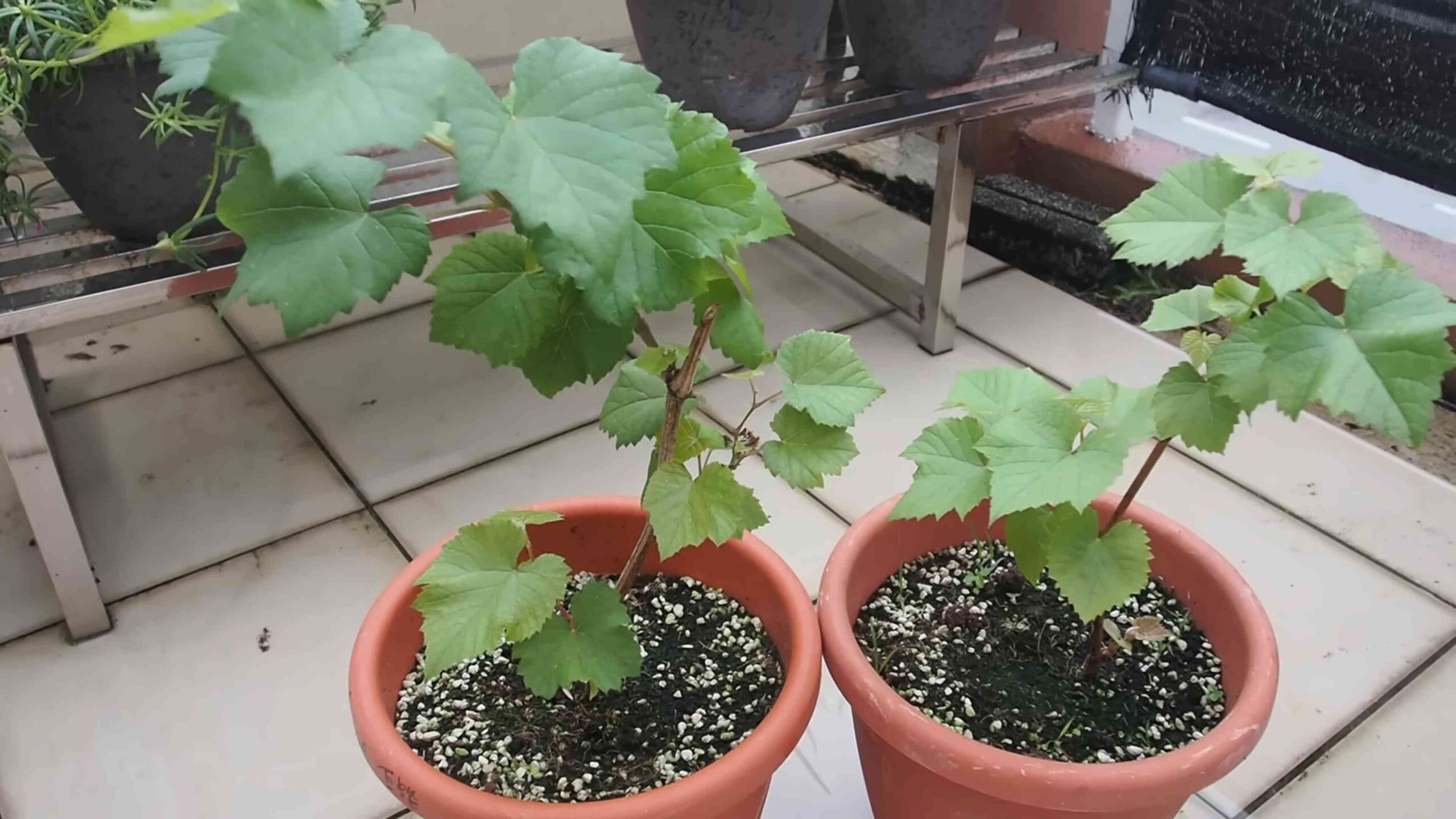
Conclusion
So, there you have it! Mastering healthy grapevine maintenance doesn’t require expensive products or complicated techniques. This simple, yet effective, DIY trick using readily available ingredients is a game-changer for anyone looking to boost their grapevine’s health and productivity. We’ve shown you how to create a natural, cost-effective solution that addresses common grapevine issues, promotes vigorous growth, and ultimately leads to a bountiful harvest.
Why is this DIY approach a must-try? Because it’s sustainable, environmentally friendly, and puts you in control of what you’re feeding your precious grapevines. Commercial products often contain harsh chemicals that can harm beneficial soil microbes and even impact the quality of your grapes. Our method, on the other hand, nourishes the soil, strengthens the vine’s natural defenses, and enhances the overall health of your grapevine.
But don’t stop there! Feel free to experiment with variations to tailor the solution to your specific needs. For instance, if you’re dealing with a particularly stubborn fungal issue, consider adding a small amount of horticultural oil to the mixture. Or, if your soil is lacking in specific nutrients, you can incorporate a small amount of bone meal or Epsom salts. Remember to always test any new additions on a small area of the vine first to ensure compatibility.
Another fantastic variation is to infuse the water with beneficial herbs like chamomile or comfrey before adding the other ingredients. Chamomile has antifungal properties, while comfrey is rich in potassium, a vital nutrient for fruit development. Simply steep the herbs in hot water for a few hours, strain, and then use the infused water as the base for your DIY solution.
The key to successful grapevine maintenance is observation and adaptation. Pay close attention to your vines, monitor their growth, and adjust your approach as needed. This DIY trick is a powerful tool, but it’s most effective when combined with regular pruning, proper watering, and good overall vineyard management practices.
We are confident that this DIY trick will transform your grapevine maintenance routine. It’s a simple, affordable, and effective way to achieve healthier, more productive vines. So, ditch the expensive chemicals and embrace the power of natural solutions.
Now, it’s your turn! We encourage you to try this DIY trick on your own grapevines and share your experiences with us. Let us know what variations you’ve tried, what results you’ve achieved, and any tips or tricks you’ve discovered along the way. Your feedback will help us refine this method and make it even more effective for grapevine growers everywhere. Share your photos and stories on our social media channels using #HealthyGrapevineDIY. We can’t wait to see your thriving vineyards!
Frequently Asked Questions (FAQ)
What are the benefits of using a DIY solution for grapevine maintenance compared to commercial products?
DIY solutions for grapevine maintenance offer several advantages over commercial products. Firstly, they are often more cost-effective, utilizing readily available and inexpensive ingredients. Secondly, they are generally more environmentally friendly, avoiding harsh chemicals that can harm beneficial soil microbes and potentially contaminate the grapes themselves. Thirdly, DIY solutions allow you to customize the formula to address the specific needs of your grapevines, tailoring the nutrient content and pest control properties to your local climate and soil conditions. Finally, using a DIY approach gives you greater control over what you’re applying to your vines, promoting a more sustainable and holistic approach to grapevine care.
How often should I apply this DIY solution to my grapevines?
The frequency of application depends on several factors, including the age of your vines, the severity of any existing problems, and the weather conditions. As a general guideline, apply the solution every 2-4 weeks during the growing season (spring and summer). If you’re dealing with a specific issue, such as a fungal infection, you may need to apply it more frequently, perhaps once a week, until the problem is under control. During periods of heavy rainfall, you may also need to reapply the solution more often, as the rain can wash it away. Always observe your vines closely and adjust the frequency of application based on their response. In the dormant season (fall and winter), application is not generally needed unless you are addressing a specific soil issue.
Can I use this DIY solution on young grapevines?
Yes, this DIY solution is safe to use on young grapevines, but it’s important to dilute it further than you would for mature vines. Young vines are more sensitive to nutrient imbalances and can be easily burned by concentrated solutions. Start with a half-strength solution and observe the vine’s response. If it shows no signs of stress, you can gradually increase the concentration to the recommended level. Also, avoid applying the solution directly to the leaves of very young vines, as they are more susceptible to foliar burn. Instead, focus on applying it to the soil around the base of the vine.
What are some signs that my grapevines need this DIY treatment?
Several signs can indicate that your grapevines would benefit from this DIY treatment. These include:
* Yellowing or browning leaves (chlorosis or necrosis)
* Stunted growth
* Poor fruit set or small, underdeveloped grapes
* Visible signs of fungal infections, such as powdery mildew or downy mildew
* Weak or brittle stems
* Overall lack of vigor
If you observe any of these signs, it’s a good idea to assess your soil conditions and consider applying this DIY solution to provide your vines with the nutrients and protection they need to thrive.
What if I don’t have all the ingredients listed in the recipe? Can I substitute anything?
While using all the recommended ingredients will provide the best results, you can make some substitutions if necessary. For example, if you don’t have apple cider vinegar, you can use white vinegar, although it may not be as effective. If you don’t have molasses, you can use honey or maple syrup as a substitute, but use a smaller amount as they are more concentrated. If you are missing a specific nutrient source, such as Epsom salts for magnesium, you can try to find a similar source or simply omit it. The key is to focus on providing a balanced blend of nutrients and beneficial microbes to support your grapevine’s health.
How should I store the leftover DIY solution?
Store any leftover DIY solution in a cool, dark place in a tightly sealed container. A glass or plastic container is suitable. Avoid storing it in direct sunlight or extreme temperatures, as this can degrade the ingredients and reduce its effectiveness. The solution should remain usable for up to two weeks. If it develops a foul odor or shows signs of spoilage, discard it and make a fresh batch.
Can this DIY solution be used as a preventative measure, even if my grapevines seem healthy?
Absolutely! This DIY solution is an excellent preventative measure for maintaining the long-term health and vigor of your grapevines. Regular application, even when your vines appear healthy, can help to strengthen their natural defenses, improve their nutrient uptake, and promote overall resilience. Think of it as a regular vitamin boost for your grapevines, helping them to withstand stress from pests, diseases, and environmental factors. A healthy grapevine is always more resistant to problems than a stressed one.
Is there a risk of over-applying this DIY solution?
While this DIY solution is generally safe, it is possible to over-apply it, especially if you are using a concentrated formula or applying it too frequently. Over-application can lead to nutrient imbalances, soil salinity issues, or even foliar burn. It’s important to follow the recommended application rates and observe your vines closely for any signs of stress. If you notice any negative effects, reduce the frequency or concentration of the solution. Remember, more is not always better when it comes to grapevine care. A balanced and consistent approach is key to achieving optimal results.

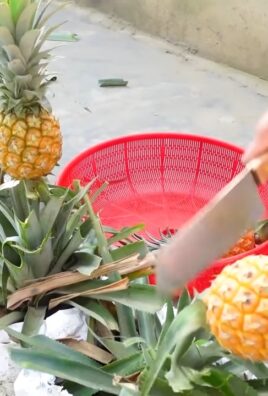
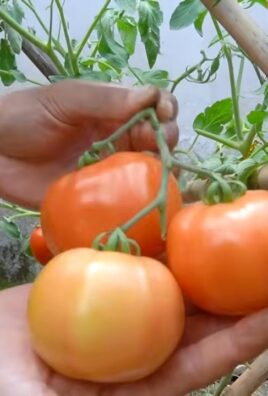
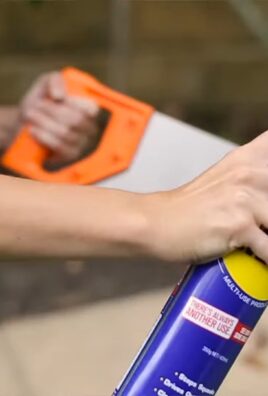
Leave a Comment